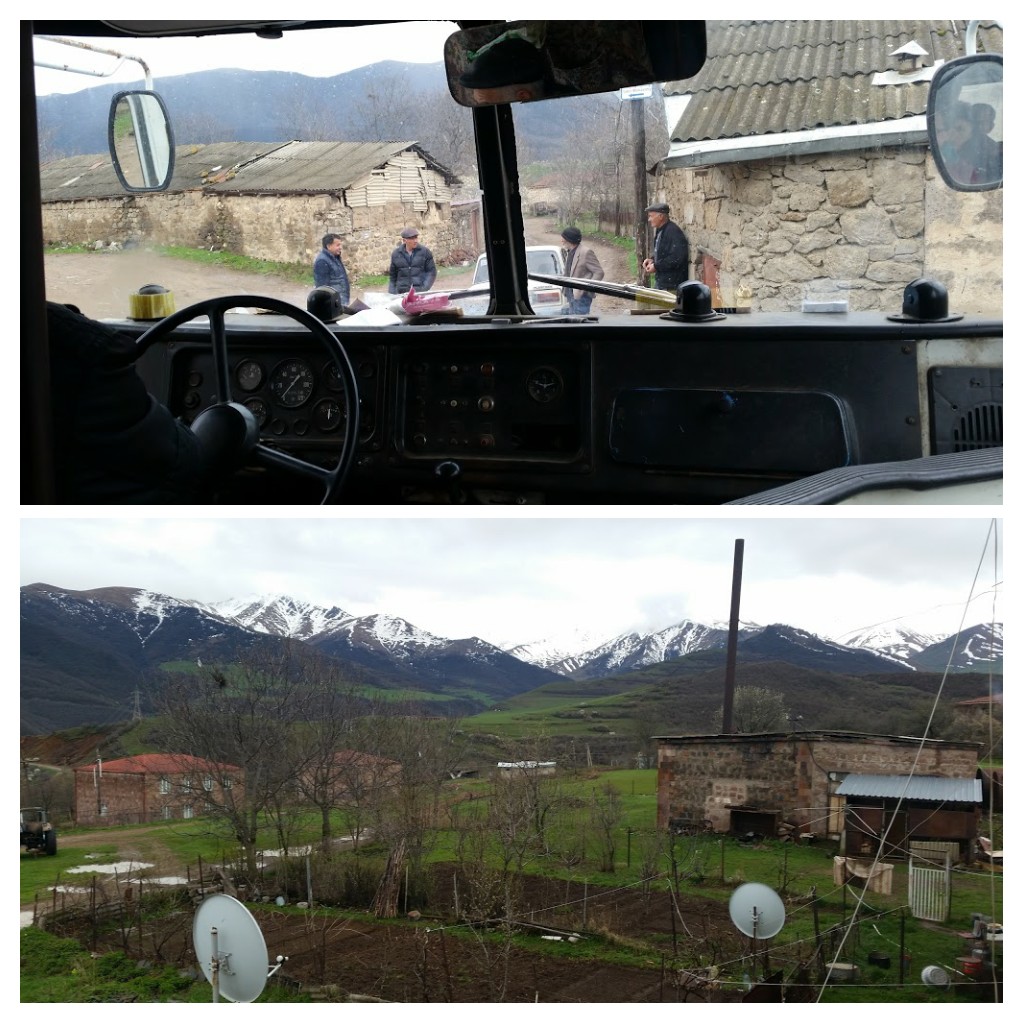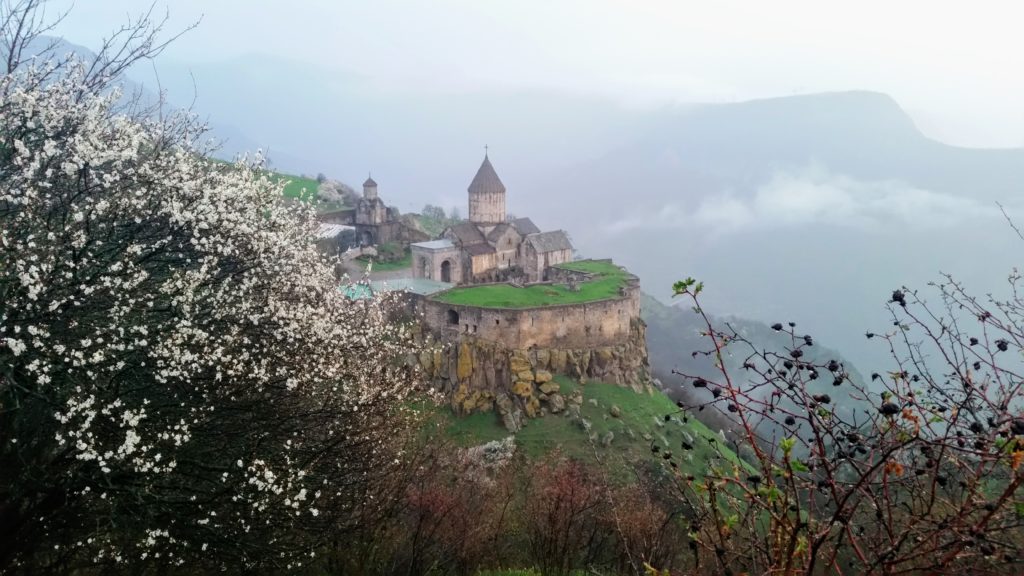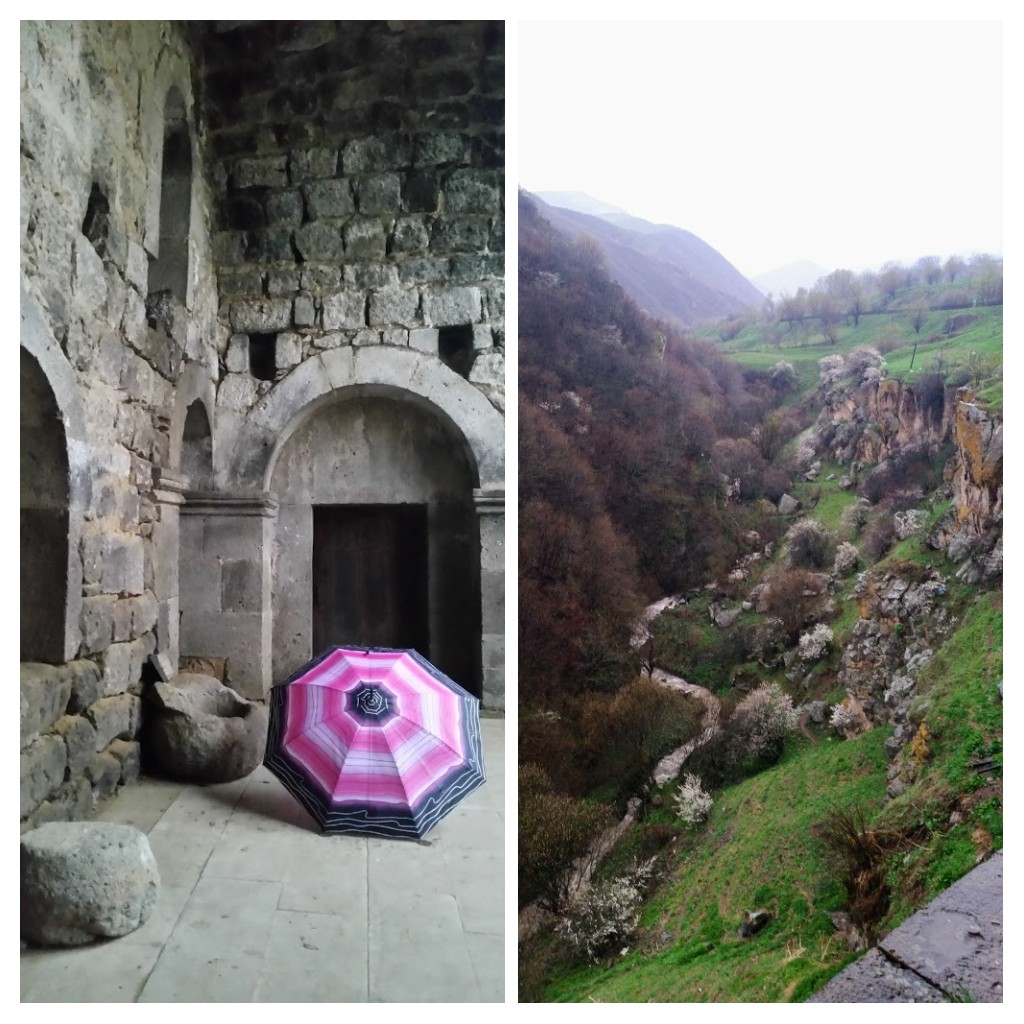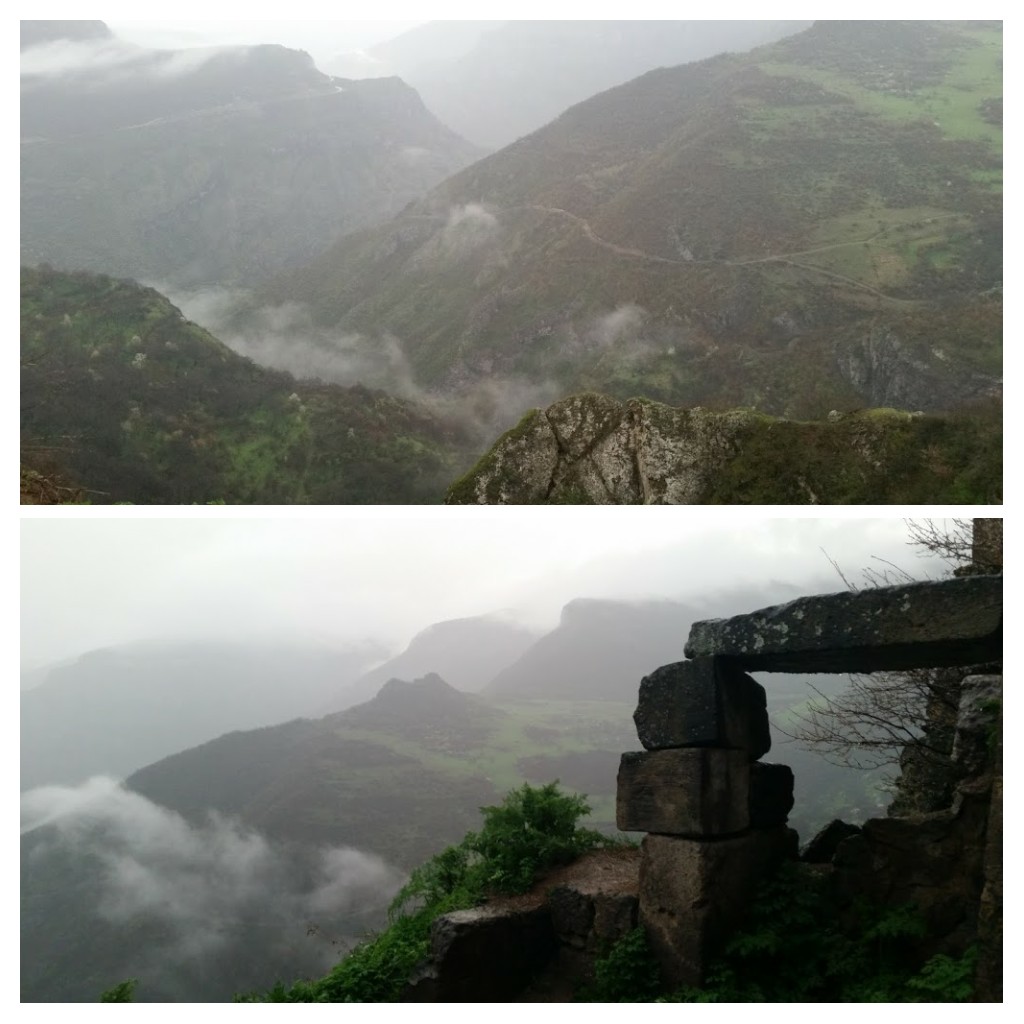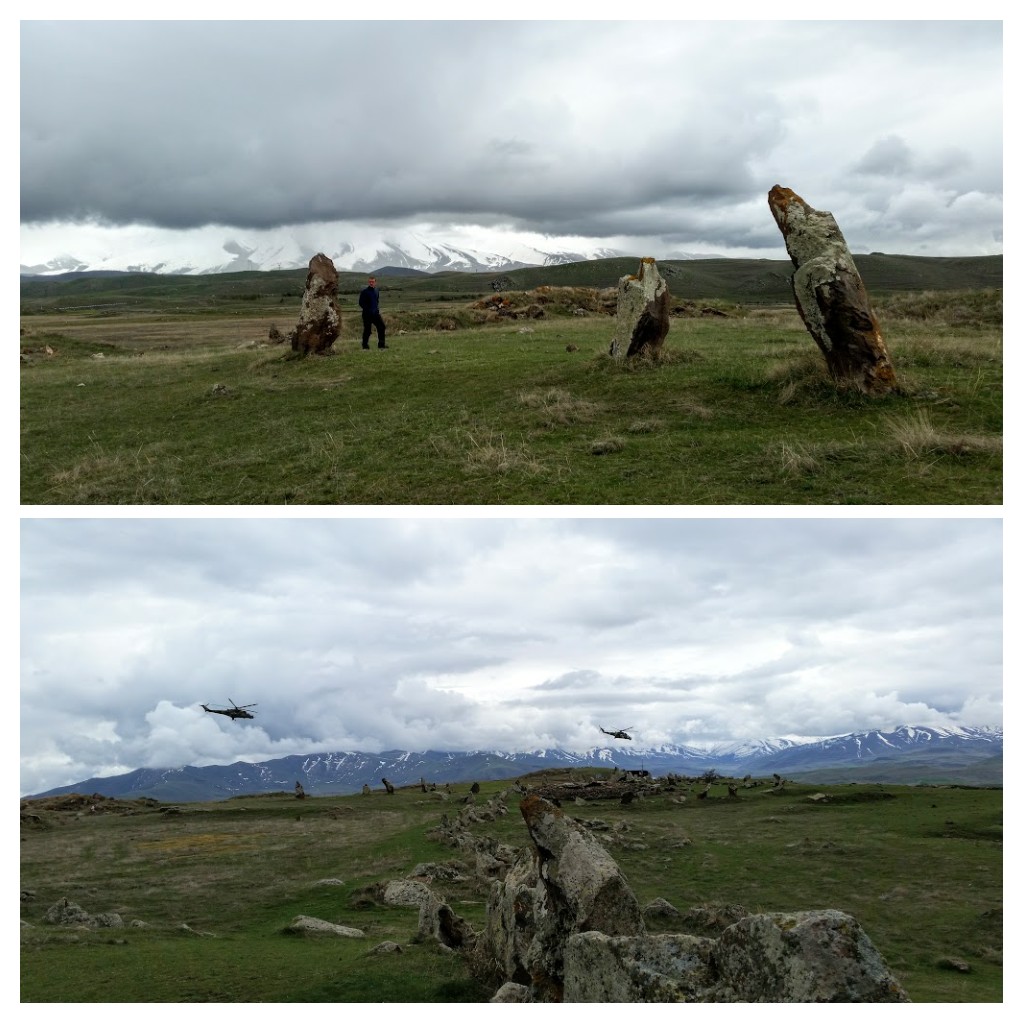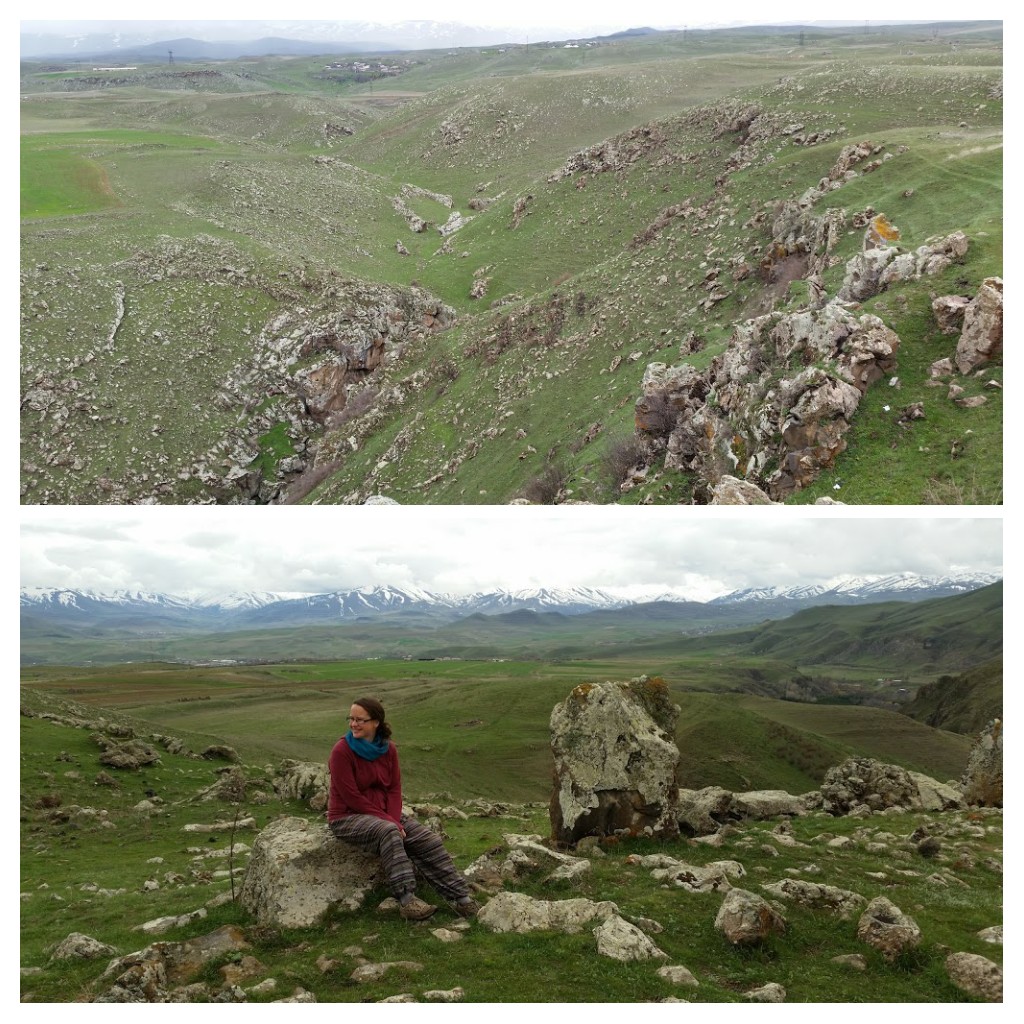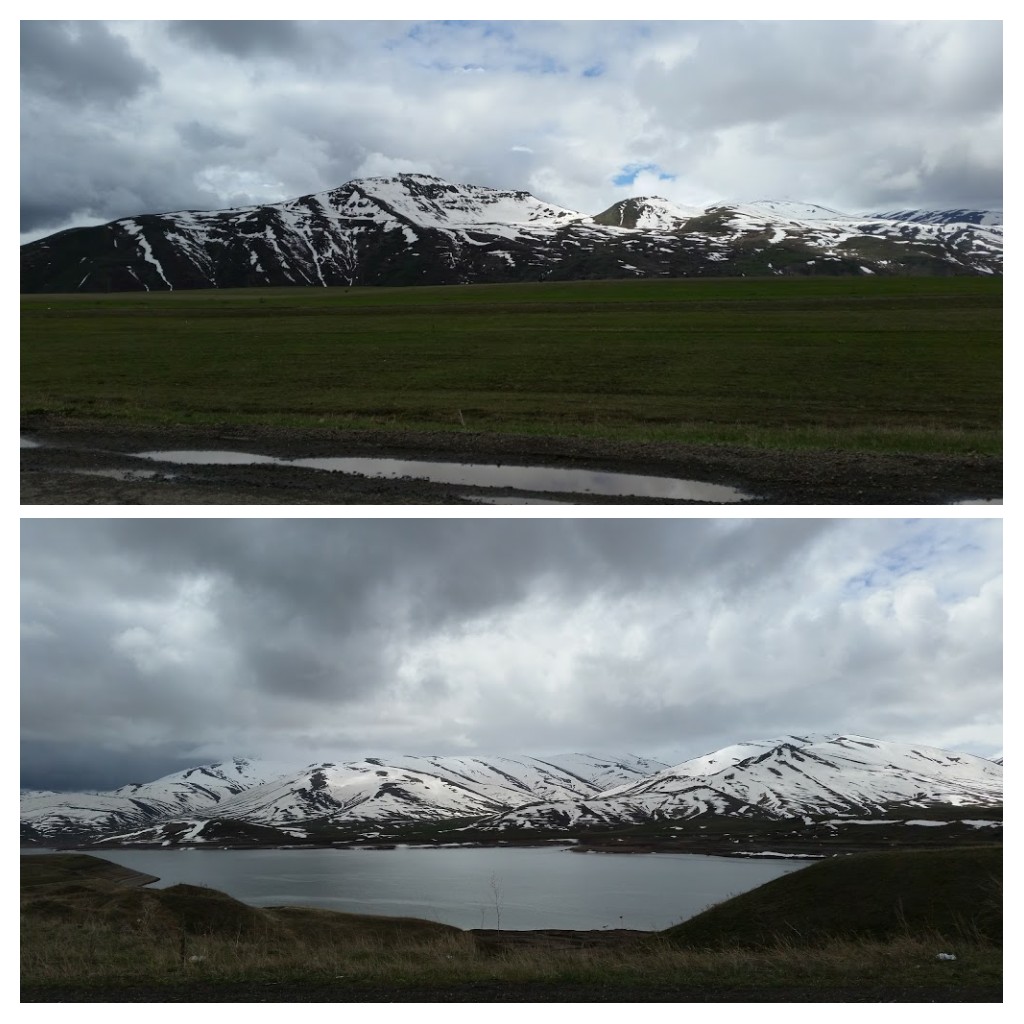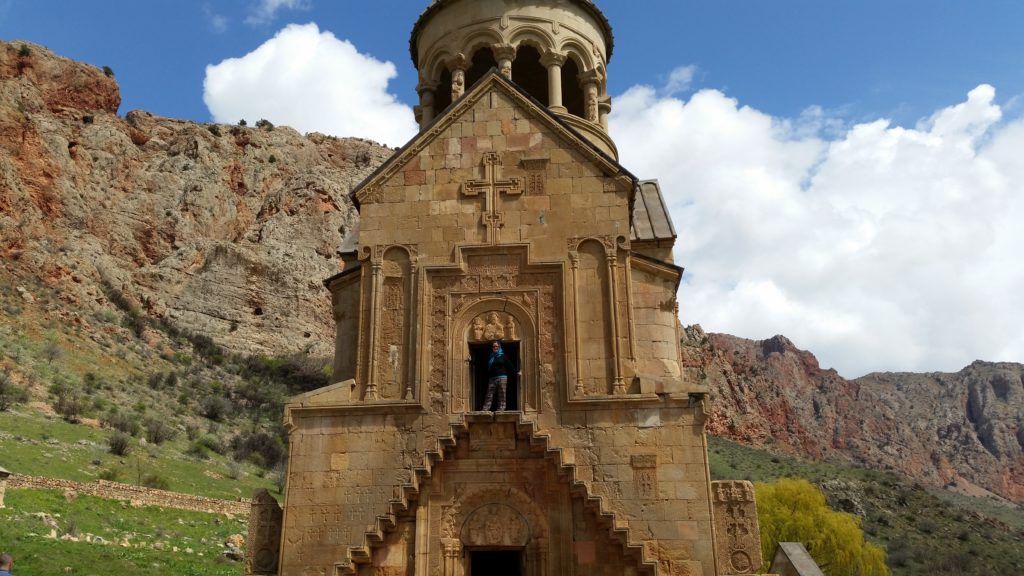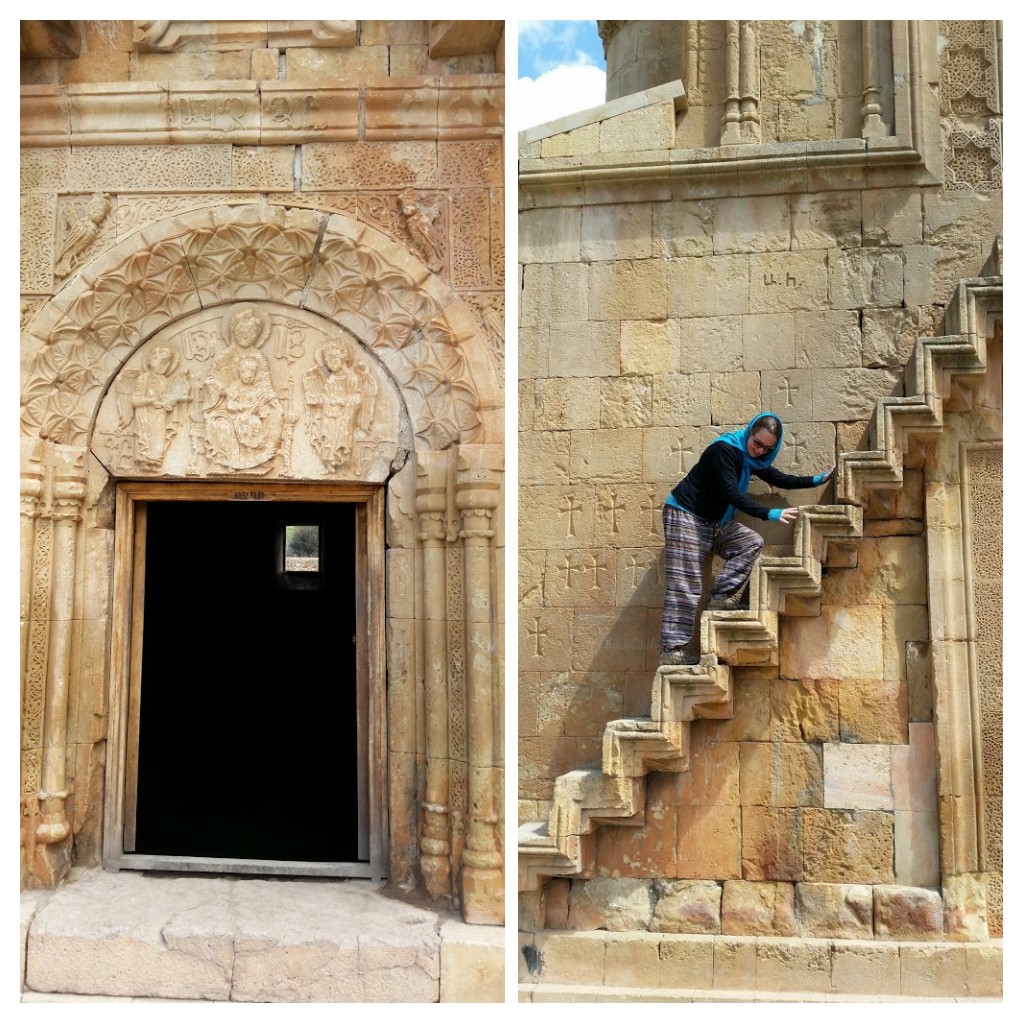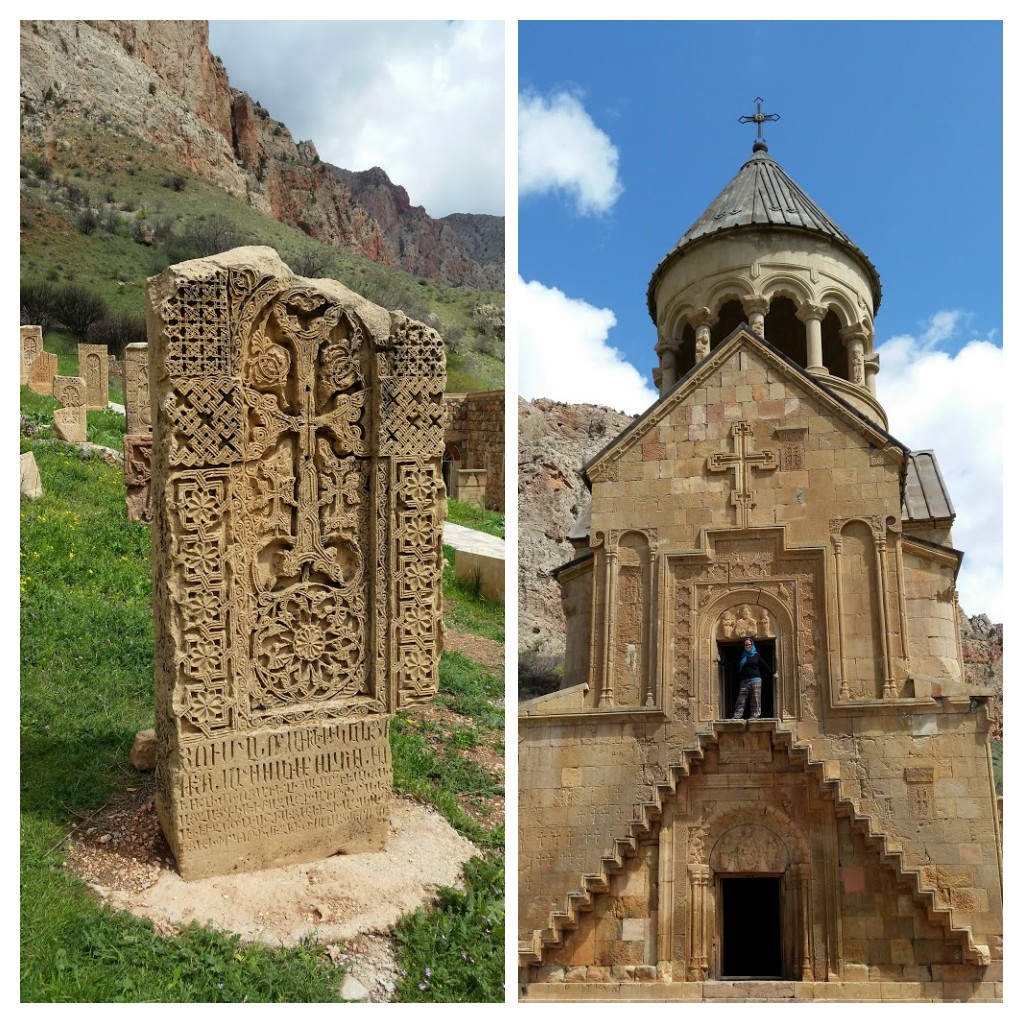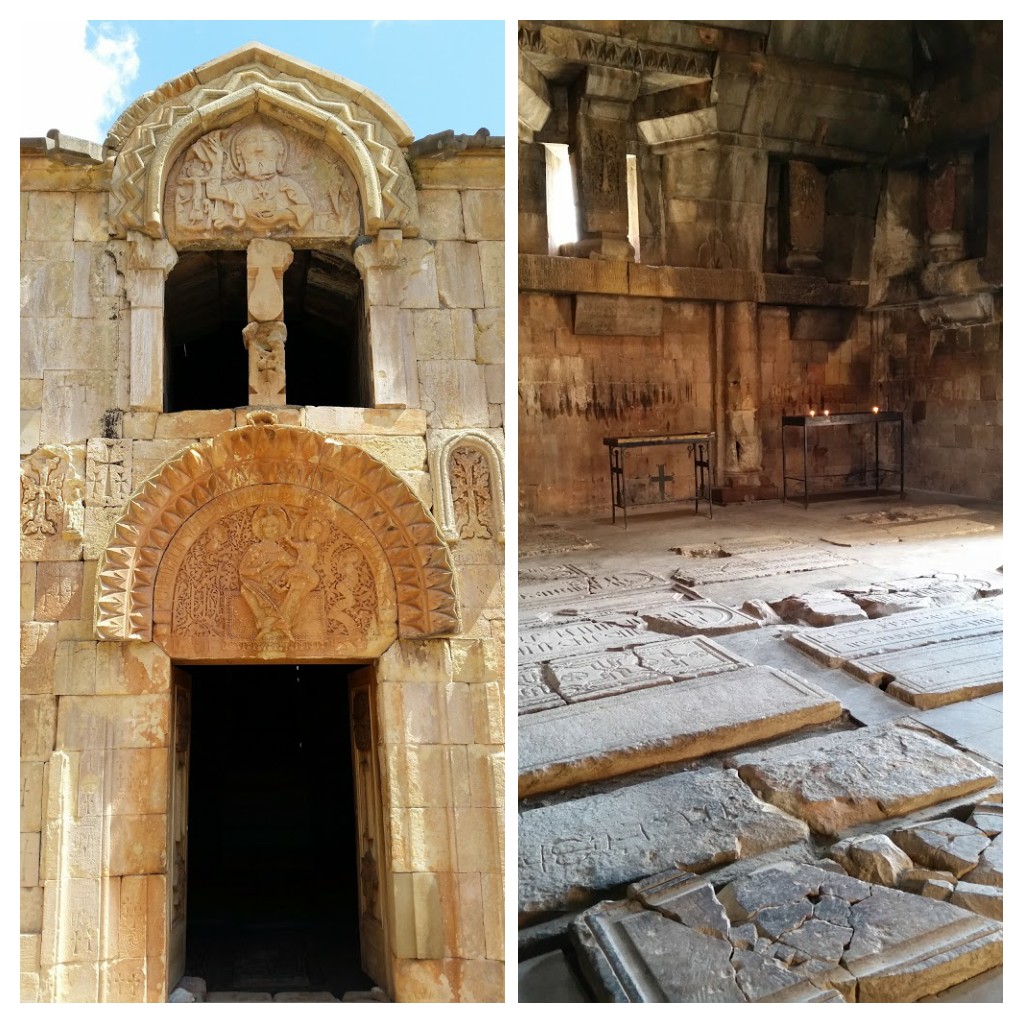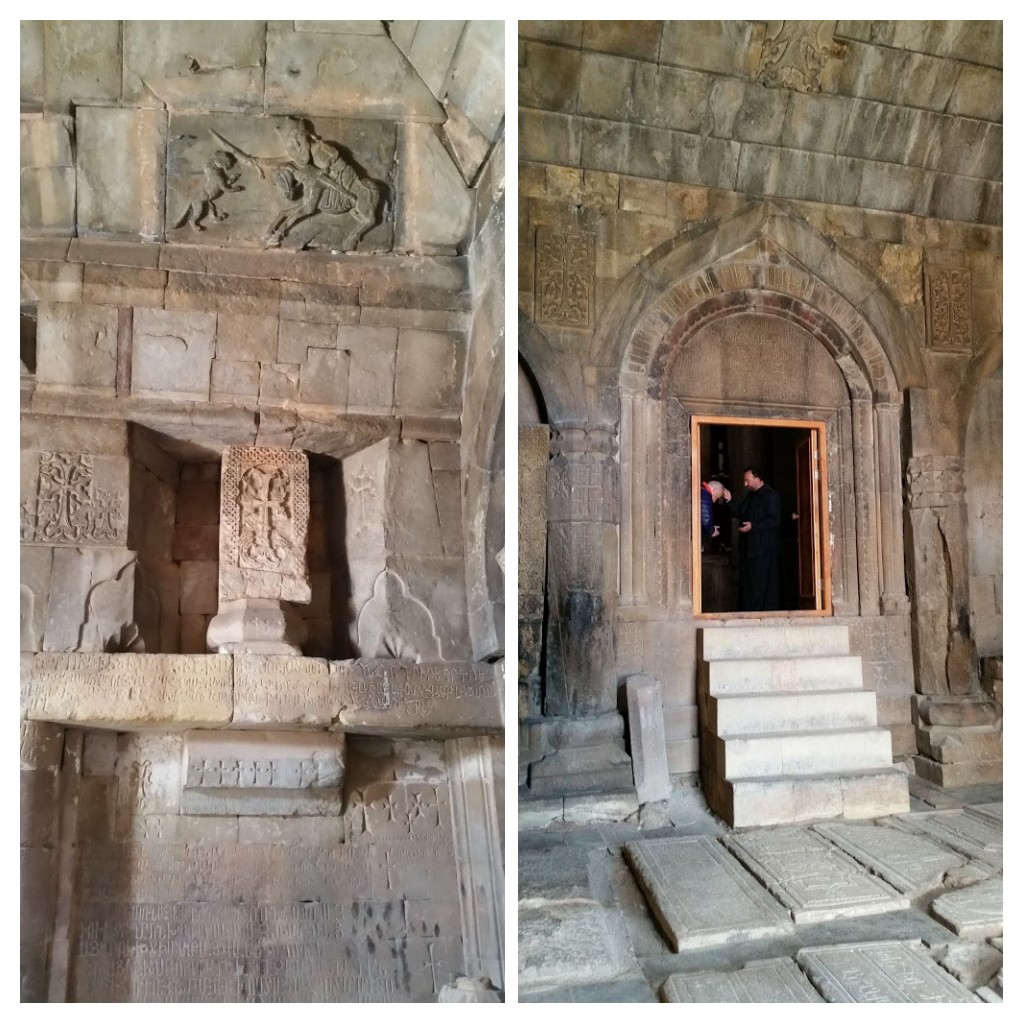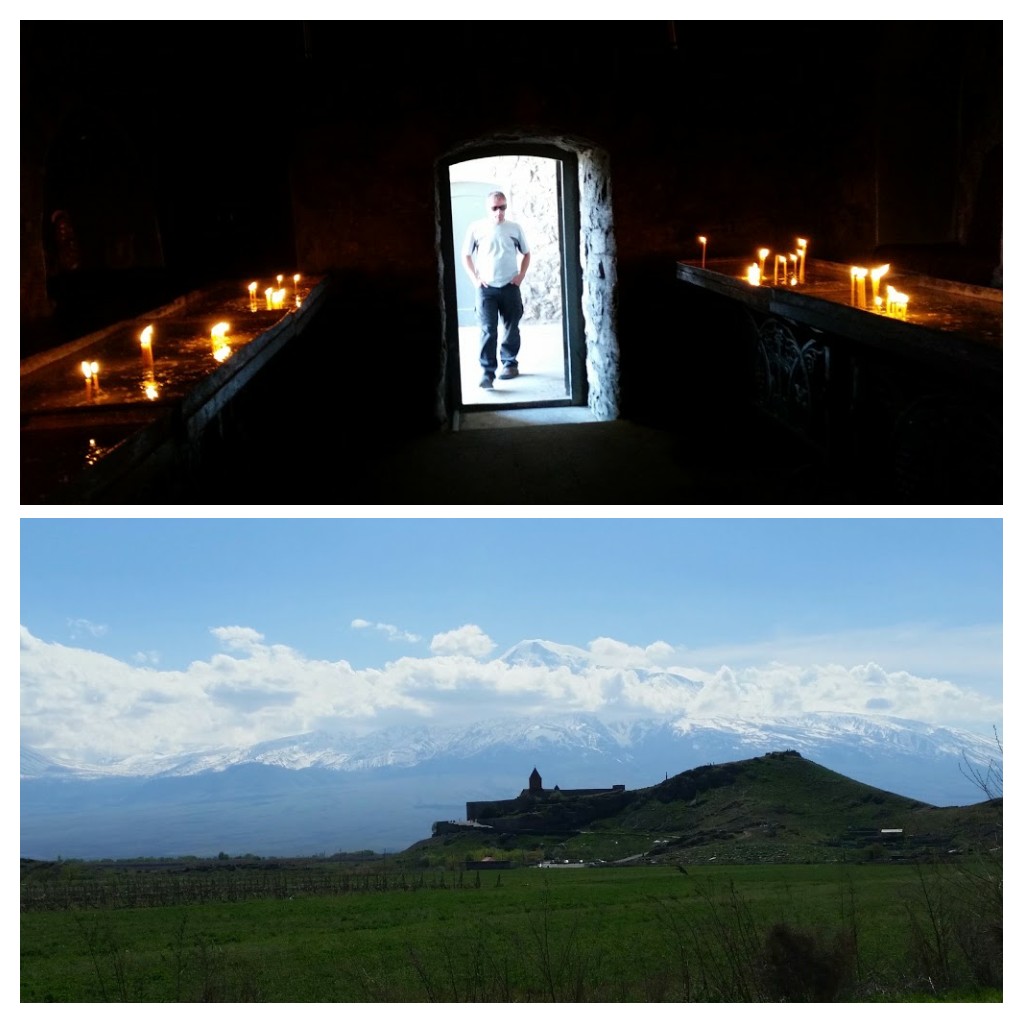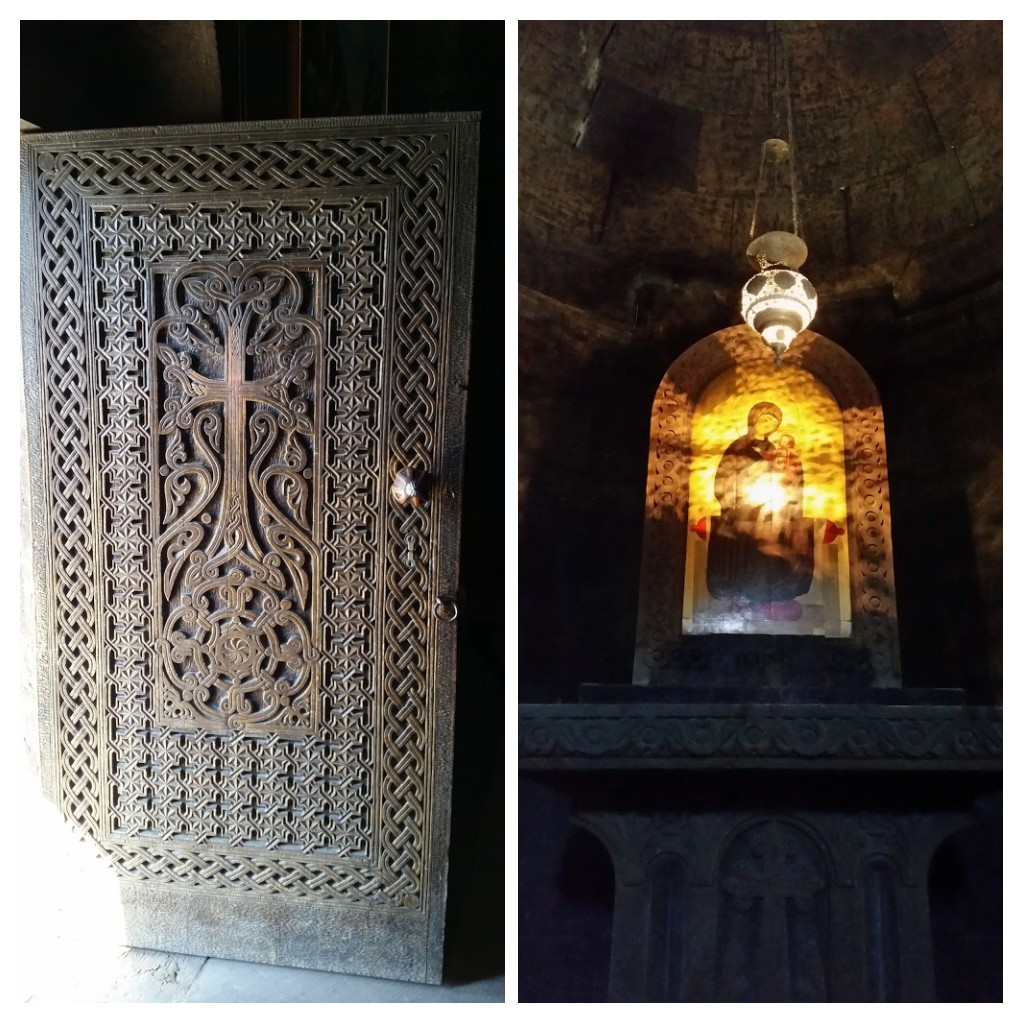After a lovely introduction to Armenia, workawaying in Kapan, we were off exploring on our own. First up was our visit to Tatev Monastery.
Tatev Monastery sits on the edge of a plateau overlooking a deep gorge and many hills. Despite the fact it rained and was misty when we were there we got glimpses of the dramatic views . The monastery complex is from the 9th century.
Armenians are very proud of their Christian heritage. It was pointed out to us on several occasions that Armenia was the first country in the world to adopt Christianity as its official religion, in the early 4th century.
Over 1000 monks lived here at Tatev in the beginning of the 11th century. We could see the rooms where they ate and inside the sparsely decorated stone churches. The place has been affected over the years by earthquakes, invasions and lootings but has survived and been restored and rebuilt since. As far as I can understand it doesn’t house monks here anymore but there are daily services held in the chapel with the nice new wooden door. We saw a priest on his way across the courtyard to conduct a service when we were there, just as brothers before him would have done, for the last thousand+ years in this place.
After a delightful meal cooked just for us at the family run information centre in Tatev (highly recommend eating here!) we were met by our B & B host who just lived up the road. All the rain had made the road very muddy so it was a bit of a slip slidey walk in the dark, but we made it. We slept well and the next day were off on our ancient bus again, this time down the Vorotan river gorge zigzags. It would have been cool to try the 5.7km long ‘Wings of Tatev’ cable car across the gorge but the drive all the way down and then back up on the other side was also an experience! We later got off the bus and into a car with a driver that had been arranged for us by Anna, the amazing young woman at the Tatev info centre. Our driver was to take us to several cool places on the way to Yerevan, our day’s end goal.
First up was Armenia’s Stonehenge, aka. Zorats Karer. It is at least 3500 years older than the British Stonehenge. Researchers believe it to be at least 7500 years old (some say it could be much older!) and one of the oldest astronomical observatories in the world.
Located in a rural area with a stunning 360 degree panorama, Zorats karer consists of stones in various circular and other arrangements. They are considered to have fulfilled both a spiritual purpose– as a temple (to the Sun god of early Armenians) & to do with burials, and also a scientific purpose as they were used to understand the stars, sun and moon. The stones were positioned according to what they knew about the rising, culmination moments and setting of the sun, moon and specific stars. Out of the 223 stones, 84 were found to have holes from which they could observe the skies. The observatory is believed to have been in use for 5500 years. This info and more from here.
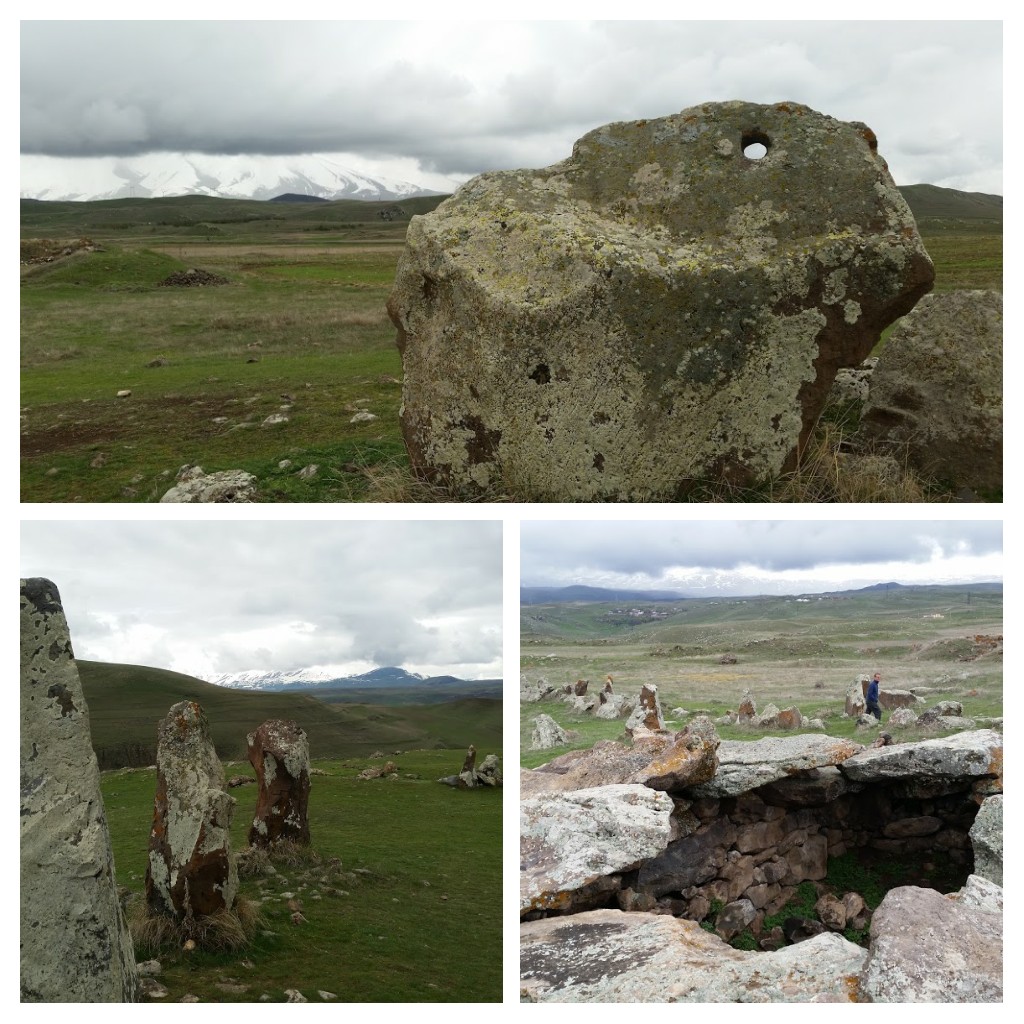
Zorats Karer- note the hole in the top rock, used for astronomical observations for over 5000 years.
We enjoyed the views and marveled at the sheer history of the place… imagining who positioned those heavy rocks in place, who carved the holes in the rocks and what they learnt from looking at the skies all those thousands of years ago. Such an incredibly ancient and fascinating site! After the mind was well and truly boggled with the age of it all, we were off again, up past snowy mountains and the pretty Spandarian Reservoir at 2000m height, down again and in to a narrow gorge where we found the beautiful Norovank Monastery.
The location of each of the monasteries we visited in Armenia was special. This one had these beautiful red cliffs behind it and across from it so was just beautifully situated.
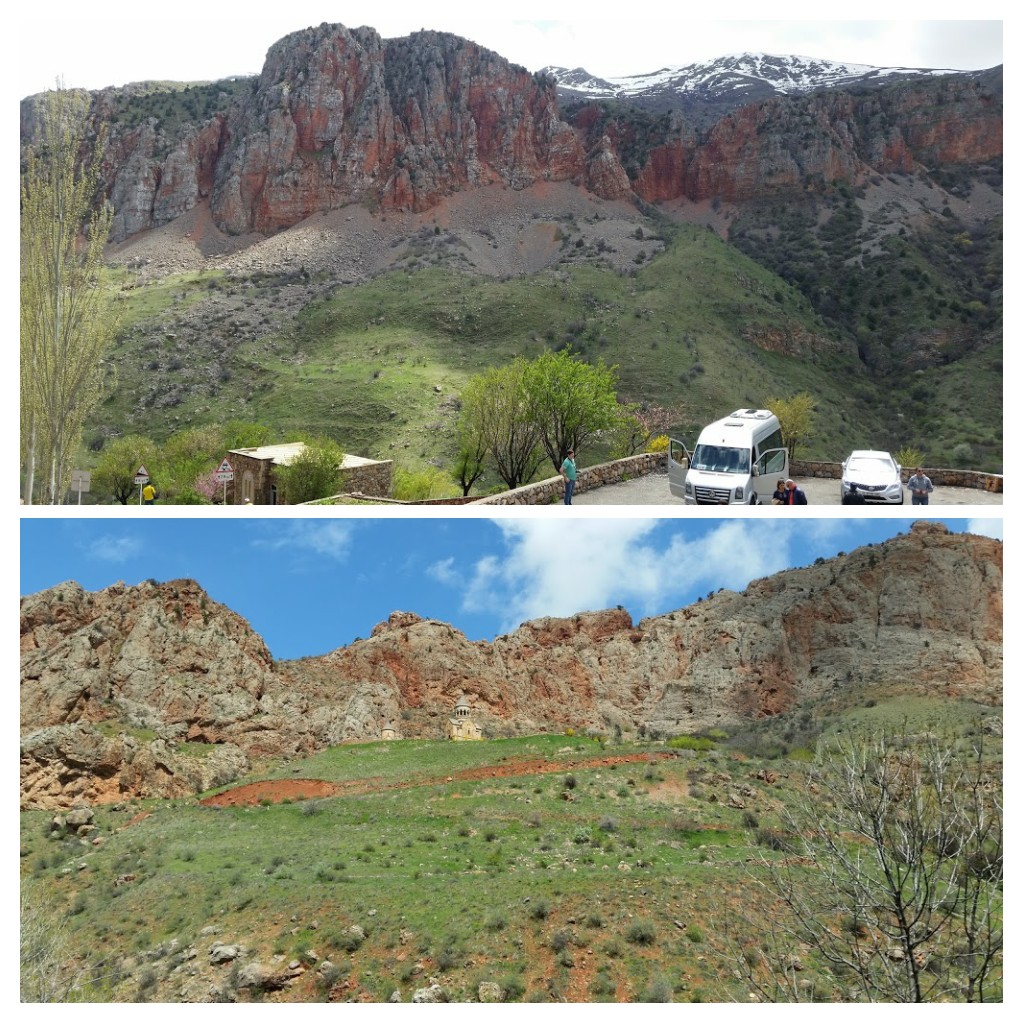
Top: view from Norovank across the gorge. Bottom: Can you spot the Monastery? View of it from the road leading up through the gorge.
The main church, the Holy Mother of God Church, was really unique. It was two storeys with the bottom floor for family tombs. You walk up the exterior stone staircases to get to the second floor chapel.
This Church was completed in 1339, and this is written in the Armenian inscription above the lower doorway arch: ‘in the year 1339’ (see pic to the left above). Above both doorways there are bas reliefs completed by Momik, the designer of the church, who died in the year it was completed. The lower doorway (pictured) has a relief of the Virgin Mary with the Christ child on her lap, the upper doorway has Jesus in the centre flanked by Peter and Paul.
There were numerous Khachkars here at Norovank. Khachkars are memorials with crosses and various other patterns and emblems carved from stone. They are characteristic of Medieval Christian Armenian art and served various purposes. Some were erected for the salvation of the soul of either a living or deceased person, others to commemorate a military victory, the construction of a church or as a form of protection from natural disasters.
The second church on the site was Surb Karapet. It was built between 1216 – 1227. The original dome was ruined in an earthquake in 1340 so it was reconstructed in 1361. Another earthquake hit in 1931 creating further damage. In 1998 the place was renovated. The highlight for me was the entrance and the two reliefs. One is of Mary seated in the oriental way on a rug with the Christ child on her lap and two saints on either side of her. Higher up was a bearded God the father blessing the crucifix with his right hand and in his left holding the head of Adam with a dove above it. Inside this building there were lots of gravestones on the floor, some kachkars, inscriptions and crosses engraved in the stone walls and a priest blessing a visitor.
Our last stop before hitting the capital was a monastery 40 km south of Yerevan called Khor Virab. It was positioned on a slight rise, with the towering Ararat behind it. The large church built in 1662 was built on the site where churches had been since the first one was built in 642. Although it didn’t seem to have any particularly notable features, this is one of the most popular pilgrimage destinations in Armenia. The reason being that it is believed Gregory the Illuminator (the one credited with bringing Christianity to the land in 301) was kept in a pit here for 13 years, after he refused to worship idols. His survival in the pit with snakes and scorpions etc was considered a miracle and together with his prayers that cured the King’s madness, led the King and then the country to adopt Christianity. He is thus regarded as the patron saint and first official head of the Armenian Apostolic Church.
